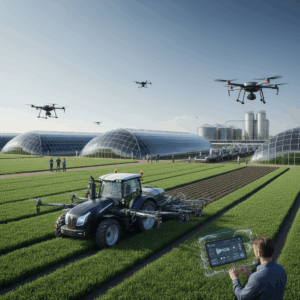Fundamentals of smart economic programs
The smart economic programs They are essential to combating poverty, addressing both the immediate and structural causes that generate social exclusion.
These programs integrate various actions, including training, financing, and access to markets, to facilitate a transition to more sustainable economies in vulnerable communities.
Furthermore, they promote social inclusion through a holistic approach that improves living conditions and creates opportunities for traditionally marginalized populations.
Multidimensional components for social inclusion
Smart programs combine job training, access to financing and technology, infrastructure development, and connection to formal markets to promote social inclusion.
This approach allows vulnerable populations to integrate into the productive system, overcome poverty, and access services that were previously inaccessible to them.
They also include a gender perspective that empowers women, increasing financial autonomy and strengthening community development.
They also focus on young people, providing technical training and support to help them overcome barriers to formal employment, thereby boosting the local economic dynamic.
Prominent example: Haku Wiñay program in Peru
The Haku Wiñay program is a paradigmatic example of successful intervention in rural communities, facilitating investment in productive assets.
Thanks to this program, participating Peruvian households achieved significant increases in their income and improved their economic sustainability.
Haku Wiñay's comprehensive approach includes technical training, access to resources, and infrastructure development, promoting social and economic inclusion.
Impact on vulnerable segments
Smart economic programs have a strong impact on the most vulnerable groups, by offering concrete tools to improve their living conditions.
Its inclusive design ensures that women, young people, and other populations living in poverty can access opportunities that were previously denied to them.
In this way, a social transformation is promoted that reduces exclusion and fosters equity at different levels.
Economic empowerment and gender perspective
The economic empowerment of women is crucial for poverty reduction, as it strengthens their autonomy and contributes to family well-being.
Programs with a gender perspective provide training and support for female entrepreneurship, increasing their income and participation in the economy.
This approach transforms not only women, but also communities, by fostering leadership roles and promoting social equality.
Support for young people living in poverty
Young people living in poverty face multiple barriers to accessing formal employment and developing technical skills.
Smart programs offer training, microloans and support, promoting self-employment and the creation of microenterprises.
These actions improve the employment and economic prospects of young people, promoting inclusive and sustainable growth.
Overcoming barriers to formal employment
Many vulnerable populations have difficulty entering formal employment due to a lack of training or support networks.
Smart economic programs eliminate these barriers through workshops, advice, and access to financing, facilitating labor integration.
This promotes economic stability and strengthens the productive capacity of these people within formal markets.
Technological innovation in poverty reduction
The technological innovation It has become a key ally in boosting poverty reduction programs, integrating new tools such as artificial intelligence.
These technologies allow for the optimization of resources and the design of more precise strategies that reach vulnerable groups more quickly and effectively.
This generates a deeper and more sustainable impact by adapting social policies to the dynamic needs of populations.
Use of artificial intelligence for optimization and monitoring
Artificial intelligence (AI) enables the massive analysis of data to identify patterns and predict social crises, facilitating the efficient targeting of resources.
Through advanced algorithms, AI improves the allocation of aid, ensuring that it quickly reaches those facing the greatest risk of poverty or exclusion.
Furthermore, the real-time monitoring offered by AI allows for policy adjustments and agile responses to social changes and emergencies.
This technological application generates greater transparency and efficiency, strengthening trust in social programs and guaranteeing their continuity and improvement.
Results and benefits of social integration
Social integration promoted by smart economic programs improves access to opportunities, strengthening the development of human capital in vulnerable communities.
These results generate a multiplier effect that promotes inclusion, equity, and people's ability to overcome poverty sustainably.
In this way, solid foundations are built for fairer, more resilient societies with greater levels of social cohesion.
Improved access to opportunities and human capital
Strengthening human capital is key to poverty reduction, as it increases people's ability to take advantage of new opportunities.
Smart programs integrate training, access to financing and technology, facilitating effective integration into labor and production markets.
This improvement in skills and resources allows beneficiaries to generate sustainable income and raise their quality of life.
Building inclusive and resilient societies
Social integration promotes the creation of inclusive communities where all members have equal access to resources and participation.
Furthermore, by strengthening local capacities, these societies become more resilient to economic and social crises, reducing vulnerability.
This approach fosters social cohesion and sustainable development, contributing to a lasting reduction in poverty.






